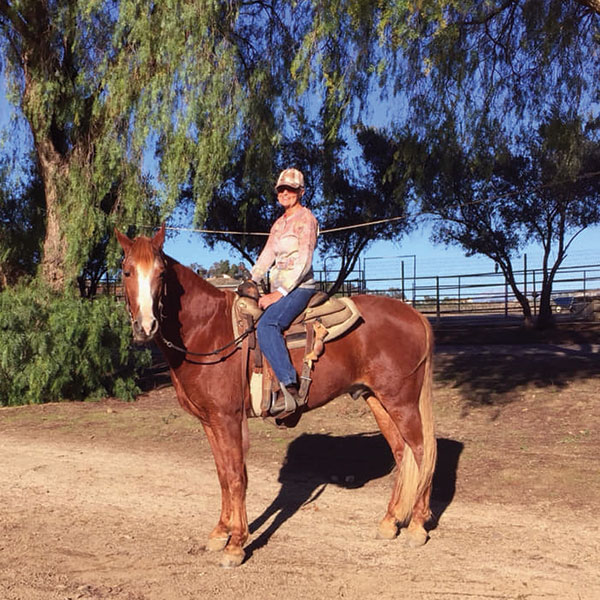By Sheryl Lynde | Horsetrader columnist

Whether starting a youngster or working with a troubled horse, training takes time. The minimum time I will take a 2-year-old for starting under saddle is 90 days. The older the horse, add an additional month to the 90 days for each year older than two.
For instance, a 4-year old would need a minimum of five months. Yes, it is an expense—good trainers aren’t cheap (cheap trainers aren’t good). But your youngster’s foundation is not something to cut corners on. If there is a hole in the training, you may not find it tomorrow, but there will be a day that it will make itself known, and hopefully you will not be caught unaware.
For a troubled horse, it depends on the issue and how long the issue has presented itself. If an 8-year-old horse has been a fearful bolter for the past five years, 30 days is not enough. The trainer may be able to make progress with the horse, but that does not guarantee success for the owner. The trainer is consistent and timely with corrections which makes all the difference in the world to the horse. The horse feels safe under the trainer’s guidance, there are clear boundaries given—he is learning the rules of the game.
Learning is the key word. Horses learn one thing at a time. When the horse responds to a cue given by the trainer accurately and calmly at all gaits, then it is time to move on to the next level in the training program. People learn in the same way. They need time to create new neural pathways to replicate a new exercise proficiently. Someone in the relationship between horse and rider needs to know more than the other in order to progress. If the horse is green or needing a behavior remedied, then the rider needs to be more skilled in order to successfully and safely train the horse. If the rider is green, then the horse needs to be more seasoned so that he can give the appropriate response, even if the rider hasn’t asked 100 percent proficiently. This creates confidence in both the rider and the horse. If the horse is taken home too soon, the owner is now the trainer. If the behavior isn’t corrected consistently, or at the appropriate time, or corrections are made with too little pressure and not enough release, then slowly but surely the training will slip away. The owner will be frustrated or defeated, in which case they decide to sell the horse or blame the trainer.
Yes, it is a financial commitment. Owning a horse is tremendously expensive, the purchase is the least of your investment. Humans aren’t inexpensive to raise either. There are the basics of food, clothing and shelter but add to that health and education. Primary school for 12 years, then college for an additional four years. Would you pull your son or daughter out of college during their first year with the mindset of “time’s up, we can take it from here.” Pulling your horse out of training before they have a solid foundation is setting up both the owner and the horse for failure.
But given the appropriate time for both the owner and the horse to learn and build confidence in their new skills, success will follow.
I had a new client come for a lesson. The minute she rode into the arena, her horse was out of control. She wasn’t an active rider, she was a passenger and at the mercy of wherever he took her. The tighter she clung to the reins, the higher his head went and the more amped he got until finally he began to bolt. A wreck was brewing. At that point I asked her to dismount when she could safely stop and I took over the lesson with her horse. She said prior to coming she was urged by riding companions to sell him. But she wanted to learn how to be a better rider for him. I was able to calm him down and get his attention, but it wasn’t anything I could help her grasp in one lesson. When she saw the change in him, she put him in training. Four months later, she was riding her horse on a loose rein in the arena and out on trail. She has significantly improved on her skills and ability. More importantly, she understands the concepts and why we do what we do and how it relates to getting both speed and directional control as well as a consistent stop off her seat and legs. She found her confidence, but it took four months—and it’s just a start. Was it worth her investment? She says, “yes!”
–Sheryl
Leave a Comment
All fields must be filled in to leave a message.